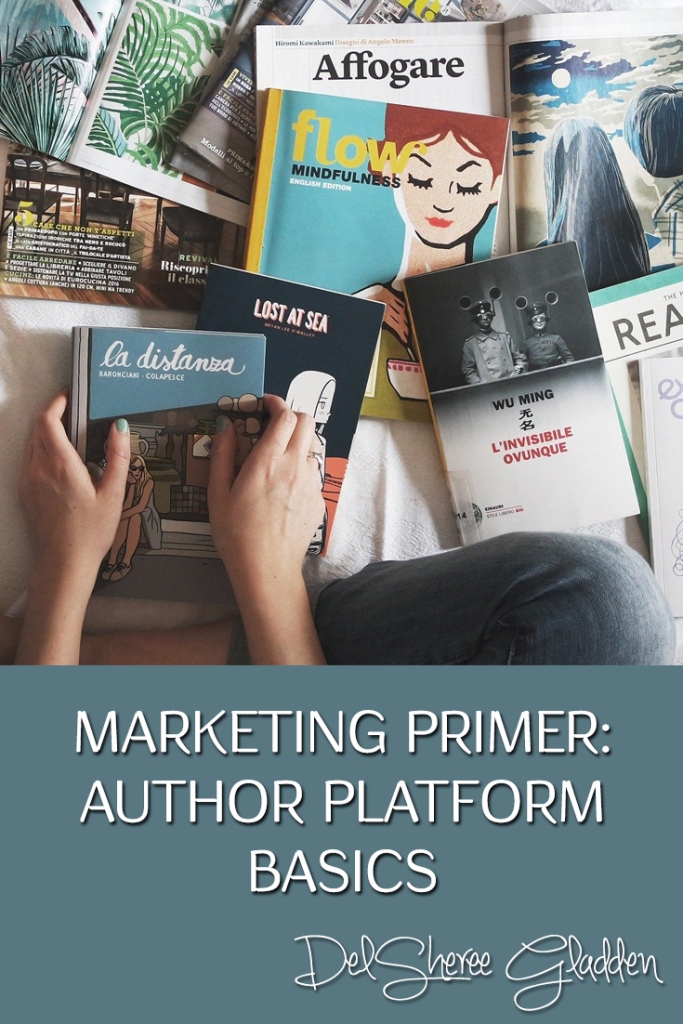Before we delve into how to use social media effectively as an author, here are a few reminders about the purpose of social media to guide your planning.
The purpose of using social media is NOT JUST TO SELL BOOKS. The purpose is to interact and cultivate fans and a community of readers.
To do this, it’s important to share useful information, use humor to make people laugh, inspire people, share the LOVE for other authors so it’s not about you all the time, share the status or progress of projects to keep readers informed, build reader interest in your project with teasers, quotes, and sneak peeks, reward loyal fans with first looks, giveaways and prizes, share your writing-related (or personal) news and events, and show your personality and share your interests with your readers.
What to Post of Social Media
Follow the 25% rule: Promotional, Informational, Personality, and Giving Back. Only 1 out of every 4 posts should be promotional.
Facebook: Posts that work well on Facebook include behind the scenes photos, quotes, fill-in-the-blank questions, true or false questions, open ended questions, blog posts about writing craft or in-progress projects, newsletters, announcements, teasers, sneak peeks of works-in-progress or new releases, live videos, excerpts, humorous memes, book/publishing-related articles, and personal interactions.
Twitter: The types of tweets the work well on Twitter include blog posts, interesting industry-related articles, quotes from famous authors, industry news of interest to other authors and readers, newsletters, announcements, Vine/YouTube videos, event updates, questions you would like readers to answer, Twitter chats, and impromptu thoughts to share with readers.
Pinterest: Pins that work well on Pinterest include product/book photos, writing guides, links to your ebooks, videos such as book trailers or author talks, infographics, quotes or tips from you or famous authors, blog posts, curated content geared toward writing or publishing, “life hacks,” instructional articles or videos, and arts and crafts.
Instagram: Because Instagram is very customer-centric it’s important to add value to images by providing specific price details when applicable. You can also share customer created pics, pics of YOU in day to day life, pictures of your non-writing interests, contests announcements, and product-centric pics. Focus on IN THE MOMENT pictures to share.
YouTube: This is a great platform to share book trailers, author readings or talks, updates or projects, and live Q&As with readers.
When to Post on Social Media
Here are some general suggestions based on research. Your personal schedule should be modified to accommodate individual account analytics and your personal time and energy available.
Facebook: 1-2 times/day, 3 times/week. Check your “Insights” to see when your fans are online most often to select posting times. It’s also important to review what types of posts fans are interacting with most as well.
Twitter: 3-30 times per day, spread throughout the day. You’ll typically see more engagement on weekends. Follow industry leaders and interact often.
Instagram: 1-2 times/day, 3 times/week. Check your insights for best posting times and pay attention to what types of post garner the most engagement.
Pinterest: 3-10 times/day. You’ll typically see more engagement on weekend mornings.
Blog: 2 times/week. Focus on producing HIGH quality content. Early mornings are typically the best times to post, especially early in the week.
YouTube: 1 time/week works well for most channels. Create a specific schedule and stick to it. Frequency varies depend on topic/brand. Research other authors and publishers working in your genres and see what they are doing.
Scheduling Posts
Scheduling your posts can be a huge time saver and help you stay on a consistent posting schedule. Most social media platforms allow scheduling through their own app or a third-party app. Some third party apps allow scheduling for multiple platforms/accounts.
Hootsuite:Works with most social media platforms. You can try it our with a free account, which will have limited options. The unlimited paid account unlocks all options, but is one of the more expensive services.
Buffer: With their free account, you can use up to 3 accounts and schedule a limited number of posts. Their paid plans allows for more accounts and unlimited scheduling.
TweetDeck: This is only for Twitter, as Twitter doesn’t allow scheduling from it’s app. This app allows you to easily manage multiple Twitter accounts and lets you set up different groups and trends to follow on the dashboard.
Tailwind: There is only a paid account option, but it allows for scheduling posts on Pinterest and Instagram. It will also suggests best posting time and gives # suggestions for each post.
Facebook Business Suite: This dashboard connects your Facebook and Instagram-linked account for scheduling, messaging, and analytics. You can only connect one Instagram account to a Facebook page.
Use Analytics to Update Your Marketing Plan
Most social media platforms offer at least basics analytics. These give you information on likes, comments, shares, visitors, referring sites, time online, top fans, popularity of content, fan location, and more.
Review your analytics regularly and update your posting times and content type accordingly to what fans/followers are liking and interacting with most. Track the effectiveness of changes or new tactics and continue to adjust over time.











